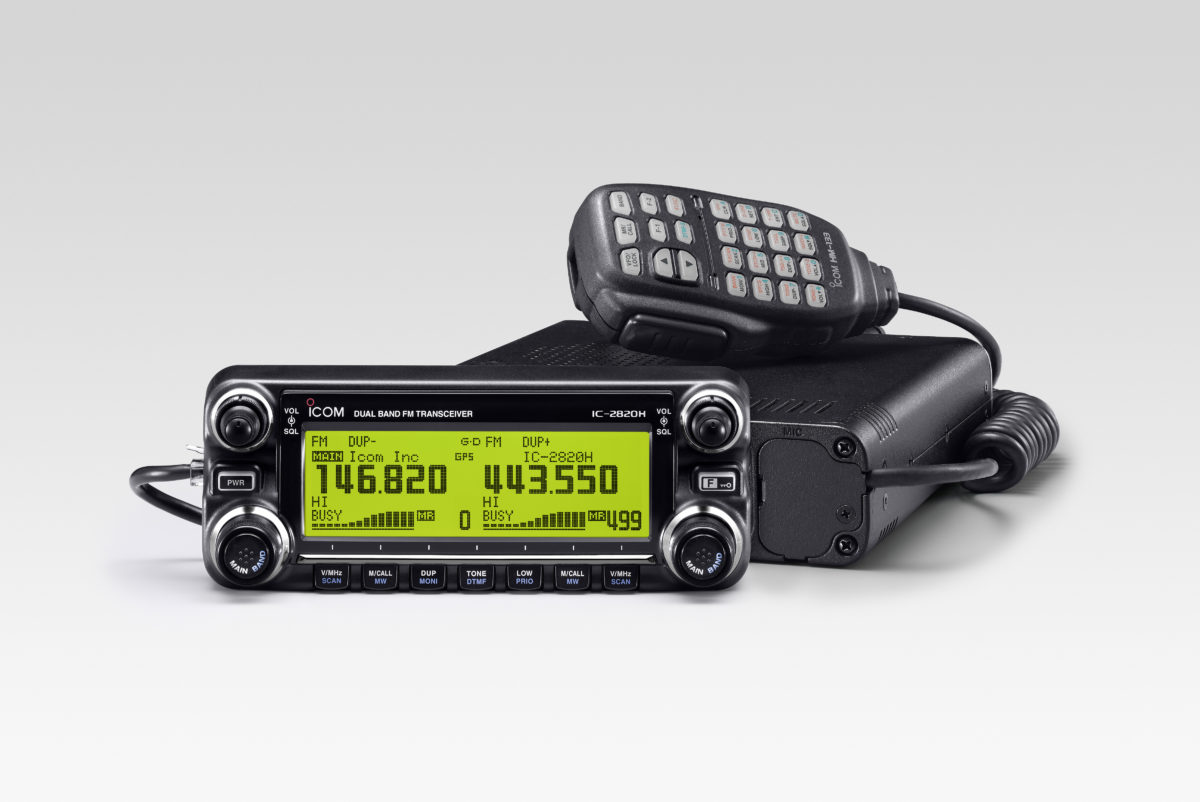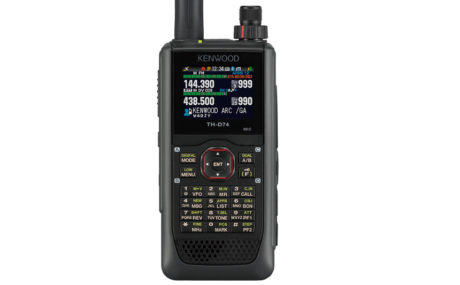“The ICOM IC-2820H 2M/440 dual bander has all the features you would expect and some you would not! You get: separate front panel, wideband receive, 3 power settings, built-in CTCSS decode/encode, selectable amber/green display, PC compatibility and 522 memory channels. V/V and U/U receive is available. The rear panel has two SO-239 antenna jacks to support diversity reception (two antennas required). The diversity function compares the receiving signal strength from two different antennas, ANT1 and ANT2, and automatically selects the strongest signal. This feature is useful when you are listening in a moving vehicle or the transmitting station itself is moving. Diversity receiving is available in 127 MHz, 136 MHz, 146 MHz, 375 MHz, 440 MHz and 500 MHz bands only.
The IC-2820H is D-STAR upgradeable with the optional UT-123 Power output is 50/15/5 watts on 2 meters and 50/15/5 watts on 440 MHz. It is 9600 BPS packet ready too (6 pin DIN). This radio comes with full function backlit HM-133 remote DTMF hand mic, mounting bracket, power cord and spare fuses. Main unit size: 5.9 x 1.65 x 7.4 inches 3.3 Lbs (150x40x188 mm 1.5 kg). Controller size: 5.9 x 2.6 x 1.25 inches 7.4 ounces (150x58x32 mm 210g). This model requires 13.8 VDC at 12 amps. This radio is supplied with the OPC-1663 and OPC-1712 separation cables. “


